Diego Rivera (Guanajuato, 1886 - Mexico City, 1957) is remembered today not only as one of the leading exponents of Mexican muralism, but also for imprinting a political matrix on art. Painting and politics: two binomials that are closely linked in the artists production. Rivera’s works, in fact, retrace the years of the eventful class struggle that shook Mexico in the early twentieth century: on the one hand, this struggle was intended to fight the military dictatorship of General Porfirio Díaz, and on the other, it was a spokesman for a people demanding rights and social justice.
The Mexican Revolution, which began in 1911 and was led by Emiliano Zapata and Pancho Villa, involved a large section of the Mexican lower class, consisting of simple workers and peasants seeking to assert their rights. In the 1920s came the first results of the struggle: social and political reforms were made, as well as the guarantee of execution of the principles of the Constitution. Having restored order in the country, the world of culture returns to breathe and to carry out the important task of educating the people. This mission also included Diego Rivera, who, in 1922, took a political stance, joining the Mexican Communist Party, thus bringing about a major change in his artistic production: from that moment on, his works went out into the streets and were literally available to all. Large murals begin to appear on the bare walls of public buildings in Mexico City.Art becomes an instrument of expression, protest and, above all, becomes a mode of expression intended to appeal to everyone.
Riveras impressive politically motivated murals are imbued with a strong social value, bringing to attention the issues most dear to communist ideology. The subjects depicted embody the working class, the humble and the marginalized, as well as manifesting an explicit critique of the Church. To date, his most famous murals, distributed between Mexico and the United States, can be regarded as precursors of public art, particularly street art, for their progressive and provocative content. Mexican art on the whole leaves the easel and exits the museum, a place now considered elitist and deputed to an art that is unable to dialogue with the people. It is in the streets of the cities that the true human spirit is breathed, it is in the murals that a pure and simple realism appears, understandable by the masses. The experience of Mexican murals soon influences the United States, thanks in part to the great artistic output of Diego Rivera.
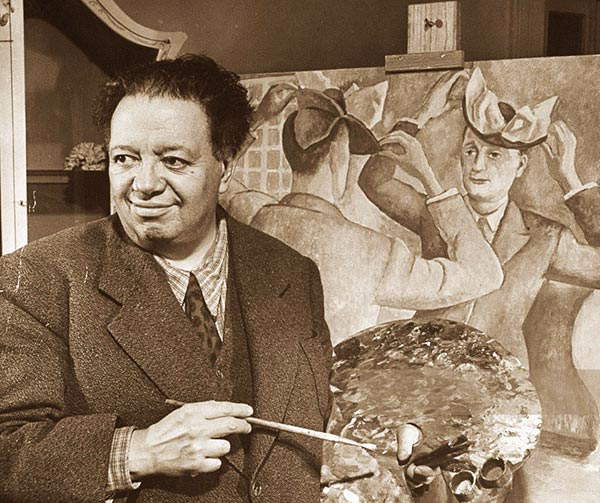
Diego Rivera was born in Guanajuato in 1886. He manifested his precocious aptitude for art when he was only ten years old, when he enrolled at the Academia de San Carlos in Mexico City, where he attended night classes and later obtained several scholarships. Fundamental to his education are his many trips to Europe: he undergoes influences both from the Italian tradition through the works of Giotto, Masaccio and Michelangelo, and from the Parisian context through the Cubist works of masters such as Pablo Picasso. Also in Paris he befriended Amedeo Modigliani, who in 1914 dedicated a Portrait to him, now in a private collection. Rivera’s successes certainly include the 1910 exhibition at the Salon des Indipéndants in Paris. Back in Mexico, he made his first mural in the Bolivar Amphitheater of the Escuela Nacional Preparatoria in Mexico City.
Rivera’s troubled love life found a calm only with his third marriage, to Frida Kahlo, at that time Mexico’s most celebrated artist. In addition to the many successes reported in the artistic sphere, Rivera’s constant tensions in the political world are worth mentioning. Continued protests over his membership in the Mexican Communist Party prompted him to step away for a time and move to the United States. There he organized a solo exhibition, which opened in 1931 at New York’s fledgling Museum of Modern Art . Two years later, in the same city, he made The Man at the Crossroads, a large mural located in Rockefeller Center, situated on Fifth Avenue, one of the emblematic streets of capitalism. The work is short-lived as the portrait of Lenin provokes much criticism and the fresco is removed. The artist’s tenacity led him, once back in his homeland, to re-propose the destroyed work on the second floor of the Palacio de Bellas Artes in Mexico City, on a smaller scale and with a modified name(The Man Who Controls the Universe).
With an extensive career and artistic output behind him, Diego Rivera passed away on Nov. 24, 1957, remaining to this day one of the most influential Mexican artists of the 20th century and a spokesman for the working class, the poor and those who, until the advent of his art, had not had the opportunity to express the social injustice they had fought so hard for and long endured.
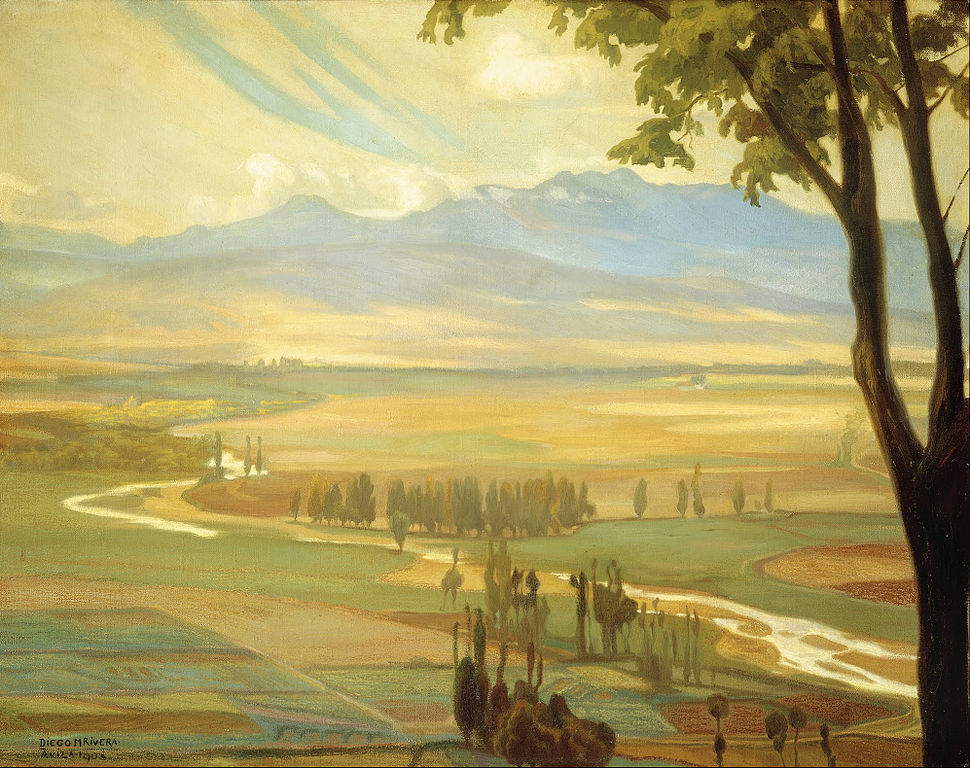
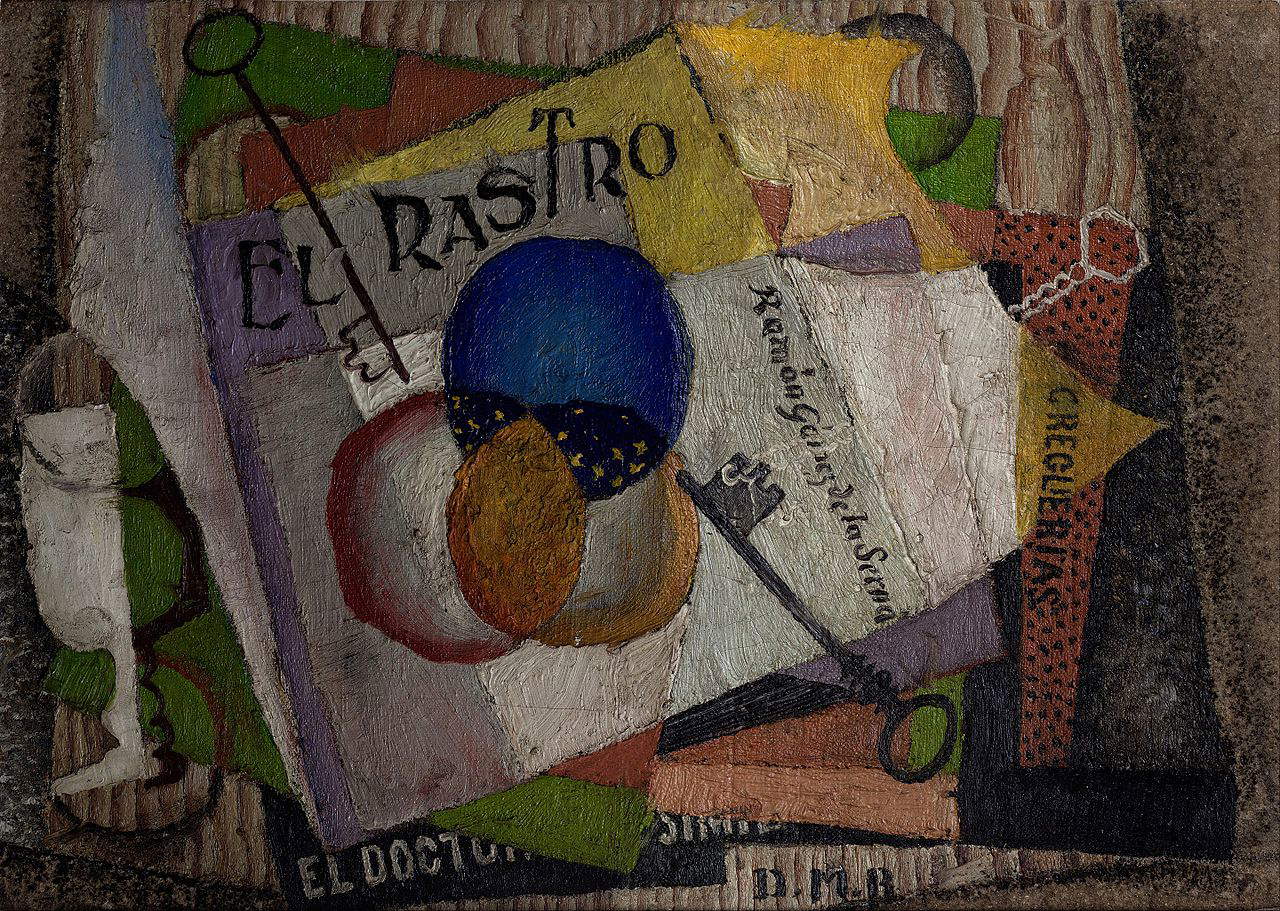
Diego Rivera’s large murals that grace the facades of buildings are often filled with characters, a tangle of workers, each intent on a different gesture, just as was the reality of workers in companies, factories, and fields. His works look like real working cities. The current in which his art fits, that of Mexican mural painting (or muralism), which has among its leading exponents artists such as José Clemente Orozco and David Alfaro Siqueiros, is an original art that draws from tradition, both European (the great frescoes of art history) and indigenous pre-Columbian, to tell the story of the Mexican revolution that broke out in 1911. The goal is to bring to life a public art with strong social and political connotations.
One of the main examples is The Detroit Industry, created in 1932. The mural is created on the facades of the Ford Motor Company among the elegant streets of New York City. It is a series of 27 murals, now housed at the Detroit Institute of Arts. The work, which depicts workers in acompany and intervenes on the relationship between man and labor as well as the relationship between man and machines (a particularly topical issue when considering the struggles for workers’ rights at the time), also raises controversy from the Church, which reads in the murals, steeped in Marxist philosophy, only a parody of the birth of Christ and calls for their removal. The intervention of the Detroit Institute of Arts, however, manages to prevent the destruction of the impressive work and protects its artistic matrix.
If the Detroit work is saved the same cannot be said of the one created at Rockefeller Center, which, as mentioned above, was certainly one of the most controversial and short-lived. The Man Who Controls the Universe is in fact one of the most emblematic works of the social struggle waged by the artist. In the depiction, controlling the universe is the figure of an idealized man. On either side are two opposing ideologies looking toward the center of the composition. On the left is the critique of the capitalist world, through the development of science and sharply contrasted with the advancing soldiers of World War I. To the right, on the other hand, is the socialist ideology led by figures such as Lenin, Karl Marx and other prominent political figures.
Among the masterpieces Rivera created in 1931 is The Construction of a City, now housed at the San Francisco Art Institute. The work depicts a construction site that punctuates several scenes. In each, a group of workers work on the construction of the city. The subject can be interpreted as a metaphor, a kind of construction of an ideal city in which each worker, through his or her contribution, can be part of a society without hierarchies and without injustice.
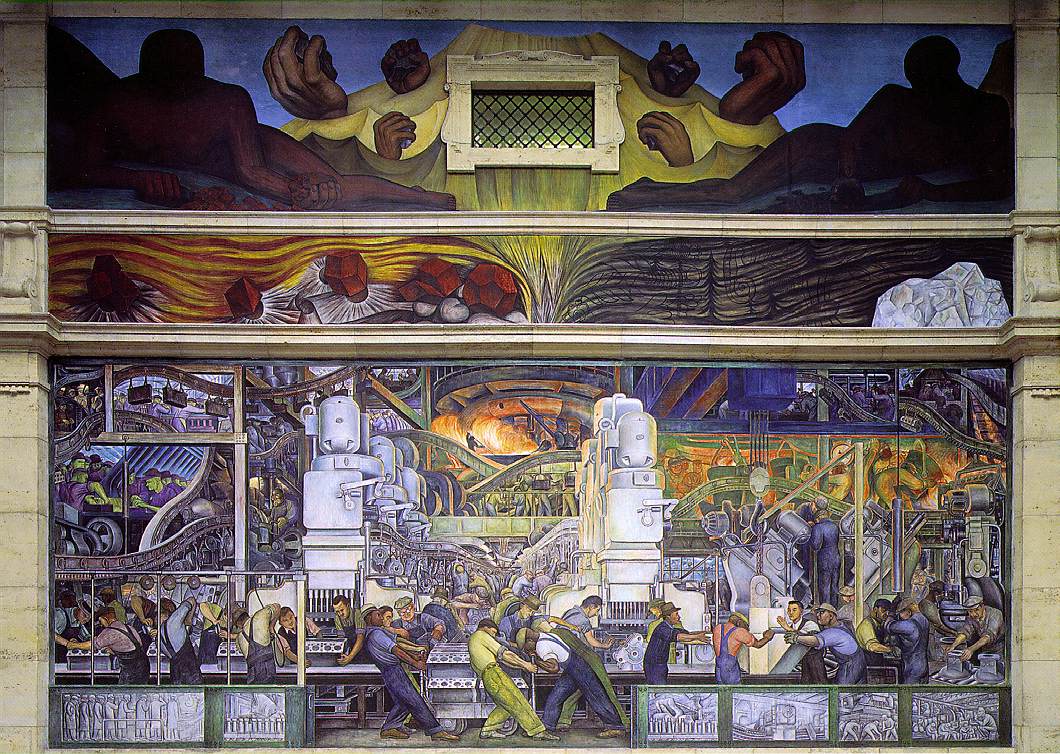
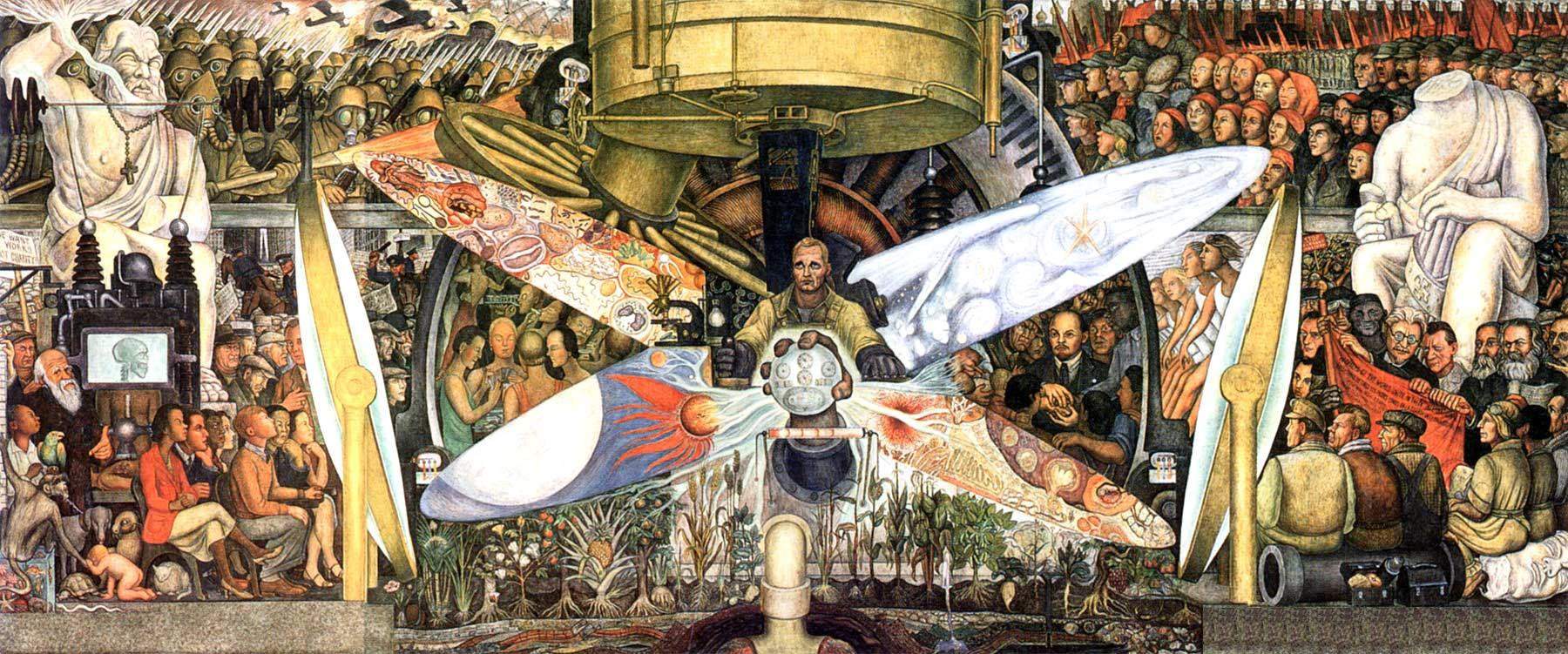
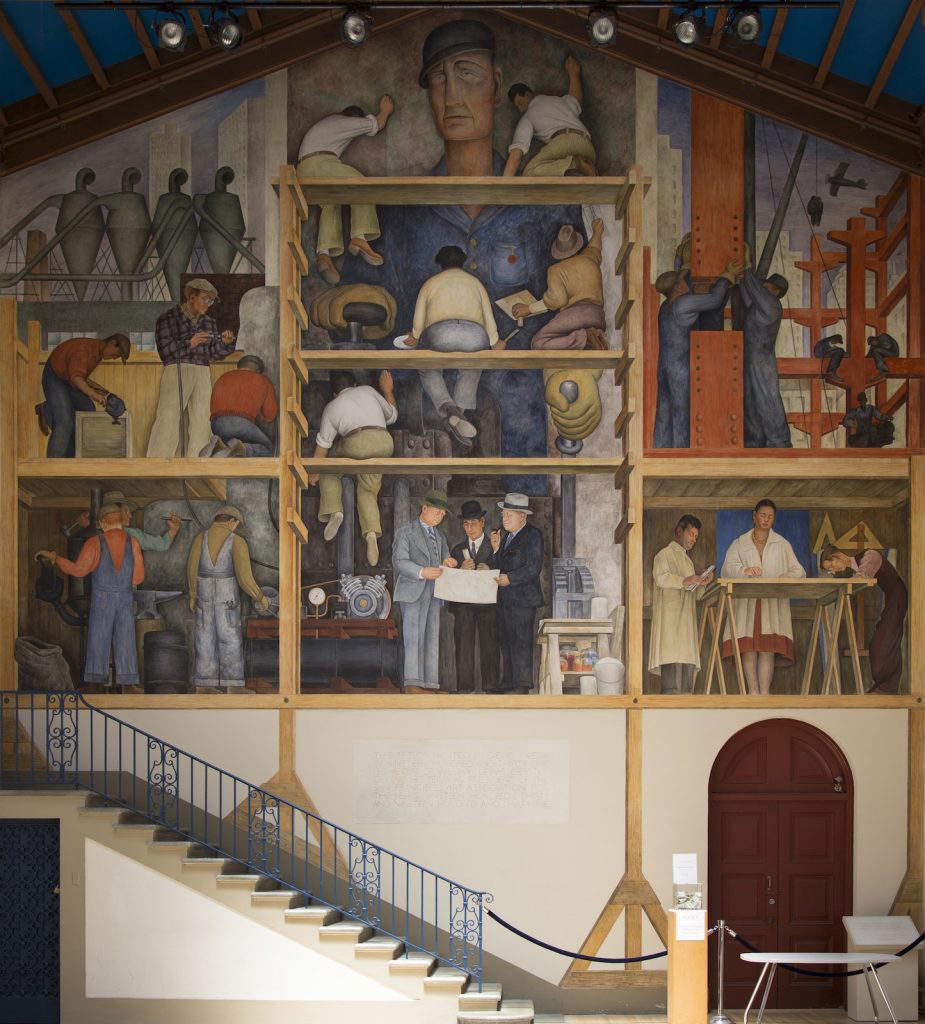
Rivera’s art can be seen mainly in Mexico and the United States. Despite the long journey it would take to visit his works in two such distant and still so divided countries would help more to understand the protests and the demand for rights that characterize his stylistic signature. Several of her movable works are housed at the Museo Nacional de Arte in Mexico City, and others can be found at the Museo Dolores Olmedo, also in the Mexican capital (an important nucleus of works by Frida Kahlo, as well as by Diego Rivera, are kept at the institution). These are the two main museums for learning about Rivera’s art.
Also in Mexico City, several of his murals can be seen: at the National Palace, the Palacio de Bellas Artes, and the Palacio de Gobierno. Outside Mexico, the most famous mural is at the Detroit Institute of Arts. Riveras art still communicates today, and while the injustices over time have changed, there remains a strong sense of protest that unites such a narrative art that embraces two distant worlds.
 |
| Diego Rivera, the great Mexican muralist. Life, works, style |
Warning: the translation into English of the original Italian article was created using automatic tools. We undertake to review all articles, but we do not guarantee the total absence of inaccuracies in the translation due to the program. You can find the original by clicking on the ITA button. If you find any mistake,please contact us.